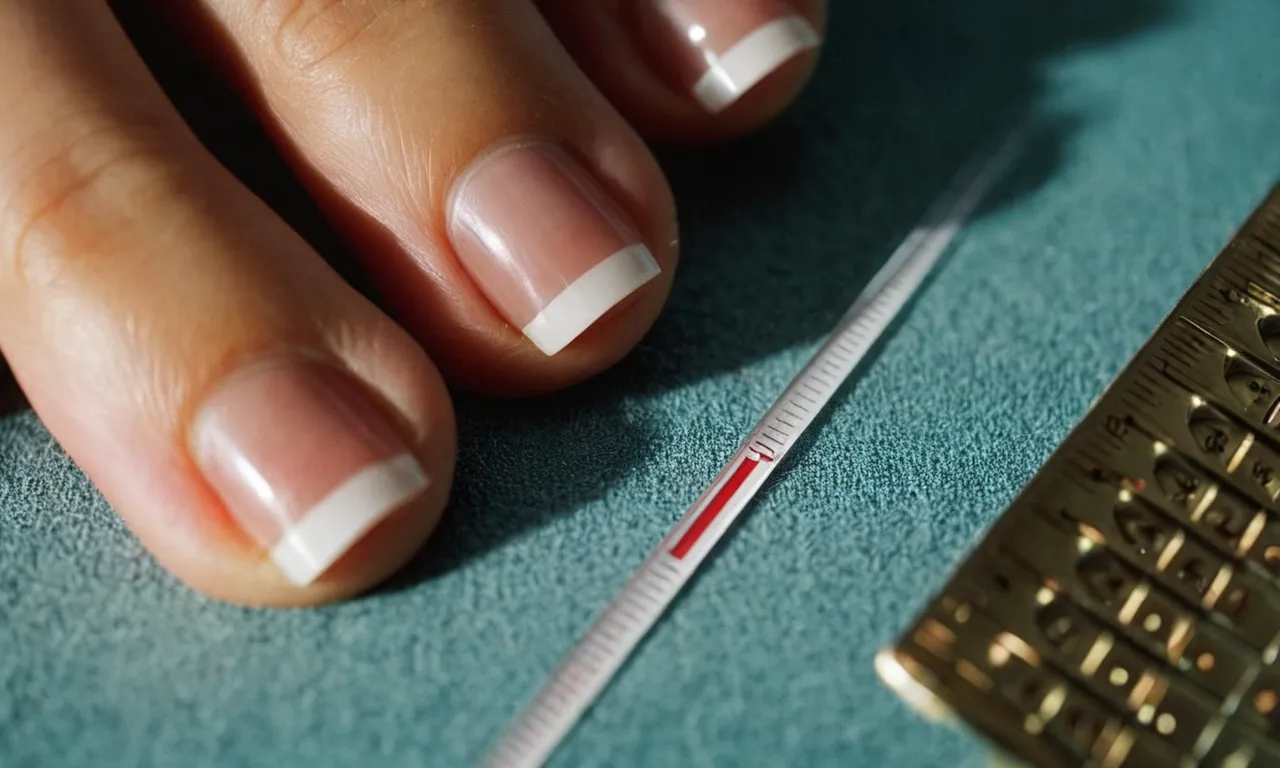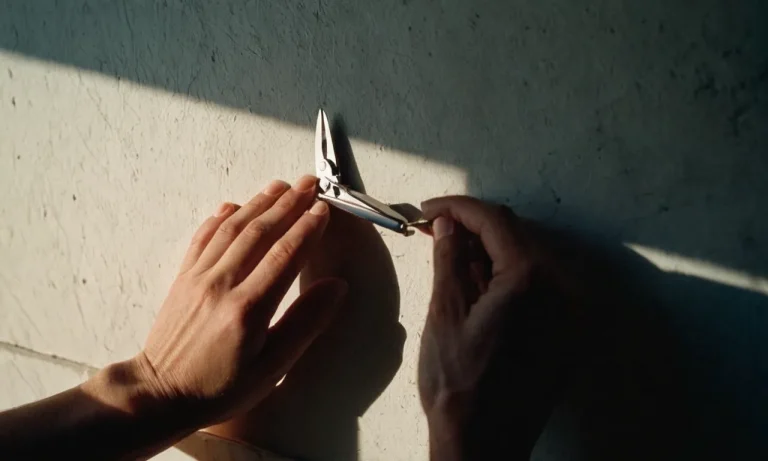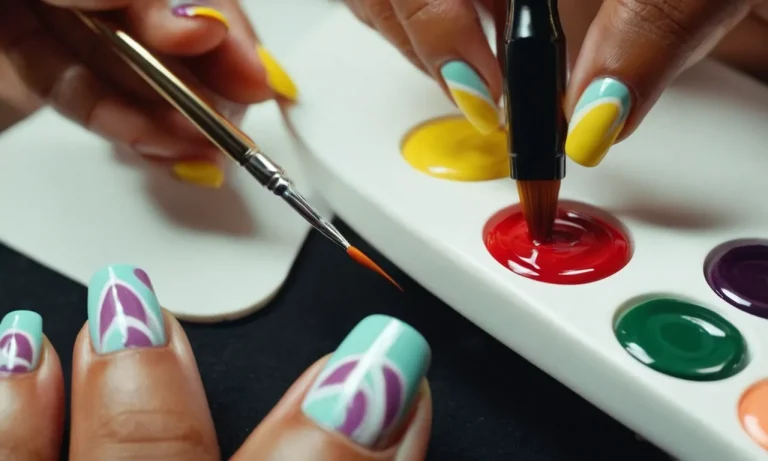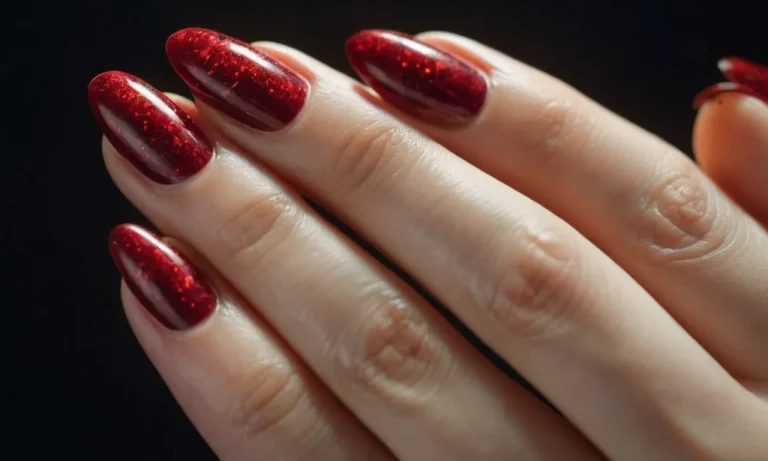How Long Should Toenails Be? A Comprehensive Guide
Do you ever look down at your feet and wonder if your toenails are the right length? Figuring out how long your toenails should be can be confusing. If you’re short on time, here’s a quick answer to your question: Ideal toenail length is just beyond the tip of your toe.
Toenails that extend too far beyond your toe can lead to ingrown toenails and injury.
In this comprehensive guide, we’ll cover everything you need to know about proper toenail length. We’ll discuss the ideal length for healthy toenails, what can happen when your nails get too long, tips for trimming them, and when you may need to see a podiatrist for special nail care.
What Is the Ideal Toenail Length?
When it comes to toenail length, there is some debate over what is considered ideal. However, most experts agree that toenails should extend just beyond the tip of the toe or have 1-2 mm of white showing at the tip. Here’s a more in-depth look at the recommended toenail length and why it’s important:
Just beyond the tip of the toe
Many sources suggest that the ideal toenail length is just beyond the end of the toe. This means that when looking at your toenails from above, you should see a sliver of white nail extending past the fleshy tip of the toe.
This extra length helps prevent ingrown toenails, which occur when the nail grows into the surrounding skin. Having a slight overhang provides a buffer between the nail and skin.
This recommended length also reduces the risk of injury. Nails that are too short can expose the sensitive nail bed to trauma. A little extra length protects the nail bed if your toe gets bumped or stubbed.
From an aesthetic standpoint, nails that are trimmed to just beyond the toe have a neat, trim appearance. So this length is ideal whether you prefer bare feet or polished pedicures.
1-2 mm of white showing at the tip
Another guideline is to trim nails so 1-2 mm of the white part is visible past the end of the toe. For reference, 1-2 mm is about the thickness of a penny. This is a more precise measurement than just “beyond the toe tip.”
With a millimeter or two of white extending past the flesh, you can be sure your nails aren’t too short or overly long. This helps minimize the risks of ingrown toenails and injury while allowing your nails to protect the nail beds.
Some sources say up to 3 mm of white showing is acceptable. But any longer than that, and nails may start to look unkempt or get caught on socks.
To summarize, the ideal toenail length is generally considered to be just beyond the tip of the toe or with 1-2 mm of white nail extending past the flesh. This modest yet functional length helps keep feet healthy and looking well-manicured.
When in doubt, consult your podiatrist for personalized advice on proper toenail trimming.
Problems Associated With Extra Long Toenails
Keeping toenails trimmed to a proper length is important for comfort and health. However, some people let their toenails grow too long, which can lead to some unpleasant issues. Here’s an overview of some of the main problems that can come with having overly long toenails:
Ingrown Toenails
One of the most common issues caused by long toenails is ingrown toenails. This painful condition happens when the edges of the nail grow into the surrounding skin instead of growing straight outward. The result is irritation, redness, swelling, and even infection in severe cases.
To avoid ingrown toenails, it’s essential to trim toenails straight across and avoid rounding off the edges.
Toenail Fungus
Letting toenails grow too long can also increase the risk of developing a fungal infection. Fungus thrives in the warm, moist environment found under lengthy nails. Once a fungus takes hold, it’s challenging to eliminate.
Symptoms of toenail fungus include thickening and discoloration of the nail, foul odor, and nail detachment from the bed. Keeping toenails trimmed short allows air circulation and helps prevent fungal growth.
Injuries and Issues with Shoes
Long toenails are prone to breaking, splitting, and other traumatic injuries. Stubbing an overly long toenail can be quite painful. Lengthy nails also make properly fitting into shoes difficult. Pressure from shoes rubs against long nails, causing pain and forcing the toes into abnormal positions.
This can lead to bunions, calluses, and hammertoes over time. Proper trimming is essential for comfortable shoe wear.
How to Trim Your Toenails
Trim after bathing when nails are softer
Trimming your toenails is easiest right after bathing, as the warm water softens the nails and makes them easier to cut. The steam from the shower or bath tub helps hydrate both the nails and the surrounding skin, allowing for a smoother trim. Soaking your feet for 5-10 minutes before clipping can achieve a similar effect if you don’t have time for a full bath. Just fill a basin with warm water, plop your feet in, and relax until the nails are nice and pliable.
Pat dry before clipping for the best results.
Cut nails straight across
When trimming toenails, it’s important to cut straight across the nail, avoiding rounding or pointed edges. Cutting straight across prevents painful ingrown toenails, keeping your feet happy and healthy! Use toenail clippers to cut the nail so it’s even with the tip of the toe. Resist any temptation to cut nails in a curved shape or trim the edges.
Stick with a simple straight line right across the top of each nail. This helps ensure even length and distribution of pressure across the nail bed. Voila – no more jagged edges or ingrown nails!
Use proper toenail clippers
Investing in a good pair of toenail clippers is essential for proper foot care. The best toenail clippers have curved, sharp blades to easily slice through thick nails. Look for clippers designed specifically for thicker toenails, which often have wider jaws.
Avoid using fingernail clippers on toes – they’re just not up to the task. The average toenail is more than 2 times thicker than the average fingernail! Regular use of proper clippers keeps nails trimmed to the perfect length and prevents painful breaks and tears. For just a few dollars, you can get salon-quality results right at home.
Treat your feet right with high-quality clippers! 👣
File edges smooth
Filing toenails after clipping is the finishing touch for a flawless pedicure. Use a fine emery board or foot file to gently smooth edges and soften corners. This removes any remaining roughness or jagged areas left from trimming.
Filing rounds out the nails nicely and further helps prevent ingrown toenails. Gently file across the top of each nail, then lightly along the sides – being careful not to file too deeply at the corners. Just a few light, short strokes is all it takes.
Don’t forget to sweep away any dust or nail fragments when you’re finished filing. Buffing nails weekly keeps them neat and attractive in between clippings. Say goodbye to snags and sharp edges! Filing is the simple secret for gorgeous, healthy looking feet and toes. 😊👍
When to See a Podiatrist
Painful ingrown toenails
Ingrown toenails can be extremely painful and lead to infection. If attempts to relieve pain and pressure by trimming the nail or loosening the skin don’t provide relief, it’s important to schedule an appointment with your podiatrist.
The specialist can numb the area and safely remove part of the nail or use other methods to fully extract the ingrown portion. This provides rapid relief and reduces risk of continued irritation or infection.
Thickened or discolored nails
Noticeable thickening or discoloration of one or more toenails warrants medical attention. In some cases this signals a fungal nail infection that requires medication to clear. However, distorted, thickened nails also result from problems like psoriasis and lichen planus.
Catching these conditions early allows quicker action to restore normal nail growth and appearance. Diabetics also deal with nail changes and need proactive podiatric care.
Diabetes related nail care
Given circulation deficiencies common with diabetes, proper nail care prevents severe complications in this population. Patients need consistent podiatric exams to monitor nails for injurious thickness, fungal infections needing medication, or ingrown borders digging into surrounding skin.
Podiatrists also assess for loss of sensation that lets minor cuts or sores go unnoticed, resulting in cascading skin damage, ulcerations and even amputation. Getting ahead of these threats is crucial for preserving quality of life.
Elderly patients
Seniors face increased nail and foot troubles requiring podiatry services. Thick or distorted nails become more prevalent but harder to manage due to declining flexibility and eyesight. Ingrown nails also occur more frequently while age dulls pain perception, allowing minor problems to advance.
Impaired circulation and neuropathy in the elderly delay healing and raise infection risk as well. Getting older also correlates with higher rates of diabetes-linked foot complications. Routinely consulting a podiatrist helps aging patients stay active with properly managed nail and foot health.
Conclusion
Keeping your toenails trimmed to the proper length is an important part of foot health and hygiene. Take the time to regularly inspect your feet and trim your nails straight across to just beyond the tip of the toe.
If you have any pain, discoloration, or trouble with cutting your nails, make an appointment to see a podiatrist. With proper care, your toenails can stay healthy and avoid any painful problems.







